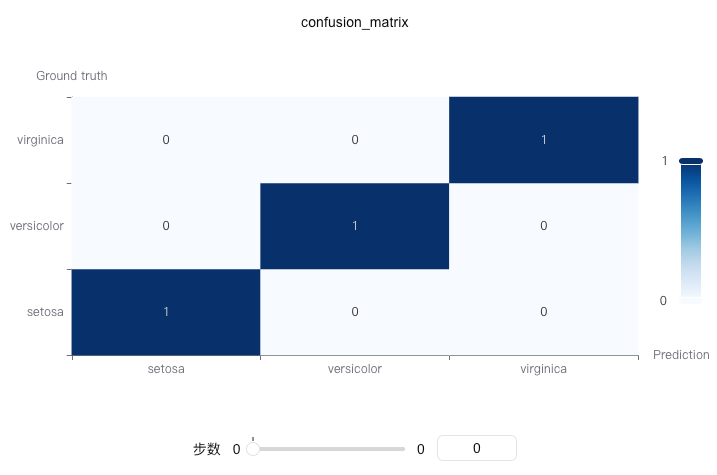Logging Confusion Matrix
A confusion matrix is a chart used to evaluate the performance of a classification model. It shows the correspondence between the model's predicted results and the true labels, clearly illustrating prediction accuracy and types of errors for each class.
The confusion matrix is a fundamental tool for evaluating classification models, especially suitable for multi-class classification problems.
You can use swanlab.confusion_matrix to log a confusion matrix.

Basic Usage
python
from sklearn.datasets import load_iris
from sklearn.model_selection import train_test_split
import xgboost as xgb
import swanlab
# Load the Iris dataset
iris_data = load_iris()
X = iris_data.data
y = iris_data.target
class_names = iris_data.target_names.tolist()
# Split into training and test sets
X_train, X_test, y_train, y_test = train_test_split(X, y, test_size=0.2, random_state=42)
# Train the model
model = xgb.XGBClassifier(objective='multi:softmax', num_class=len(class_names))
model.fit(X_train, y_train)
# Get predictions
y_pred = model.predict(X_test)
# Initialize SwanLab
swanlab.init(project="Confusion-Matrix-Demo", experiment_name="Confusion-Matrix-Example")
# Log the confusion matrix
swanlab.log({
"confusion_matrix": swanlab.confusion_matrix(y_test, y_pred, class_names)
})
swanlab.finish()Using Custom Class Names
python
# Define custom class names
custom_class_names = ["Class A", "Class B", "Class C"]
# Log confusion matrix with custom names
confusion_matrix = swanlab.confusion_matrix(y_test, y_pred, custom_class_names)
swanlab.log({"confusion_matrix_custom": confusion_matrix})Without Class Names
python
# Without specifying class names, numeric indices will be used
confusion_matrix = swanlab.confusion_matrix(y_test, y_pred)
swanlab.log({"confusion_matrix_default": confusion_matrix})Binary Classification Example
python
import numpy as np
from sklearn.datasets import make_classification
from sklearn.model_selection import train_test_split
import xgboost as xgb
import swanlab
# Generate binary classification data
X, y = make_classification(n_samples=1000, n_features=20, n_informative=2, n_redundant=10, random_state=42)
X_train, X_test, y_train, y_test = train_test_split(X, y, test_size=0.3, random_state=42)
# Train the model
model = xgb.XGBClassifier(use_label_encoder=False, eval_metric='logloss')
model.fit(X_train, y_train)
# Get predictions
y_pred = model.predict(X_test)
# Log confusion matrix
swanlab.log({
"confusion_matrix": swanlab.confusion_matrix(y_test, y_pred, ["Negative", "Positive"])
})Notes
- Data Format:
y_trueandy_predcan be lists or numpy arrays. - Multi-class Support: This function supports both binary and multi-class classification.
- Class Names: The length of
class_namesshould match the number of classes. - Dependencies: Requires installing the
scikit-learnandpyechartspackages. - Coordinate System: In scikit-learn's
confusion_matrix, the top-left corner is (0,0), while in pyecharts' heatmap, it is the bottom-left. This function automatically handles the coordinate transformation. - Matrix Interpretation: In the confusion matrix, rows represent true labels and columns represent predicted labels.